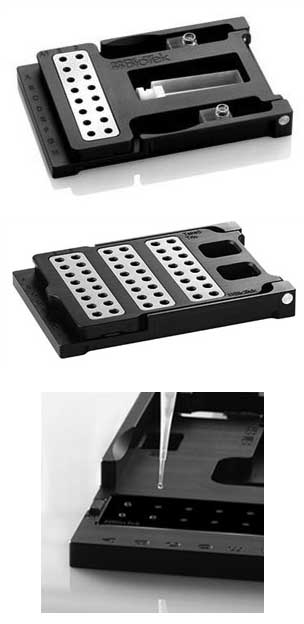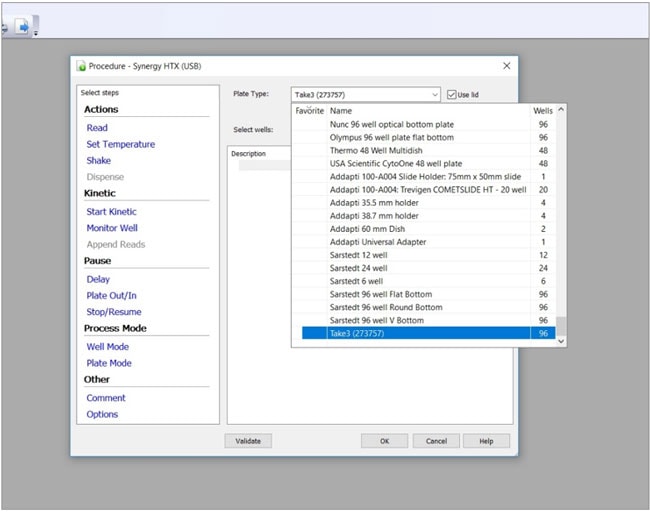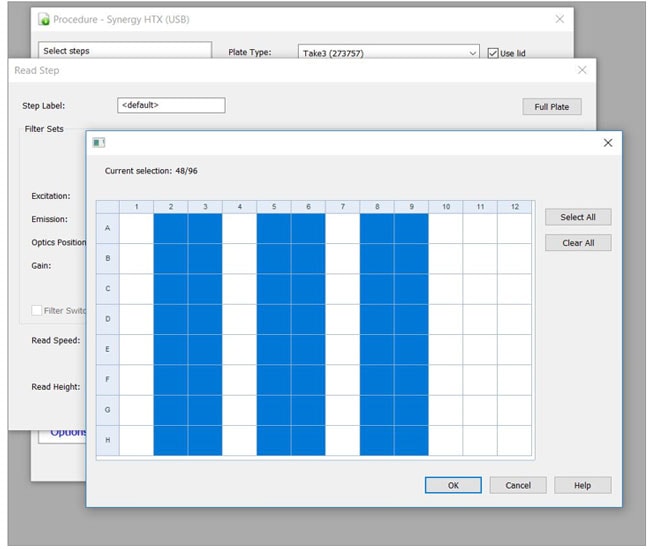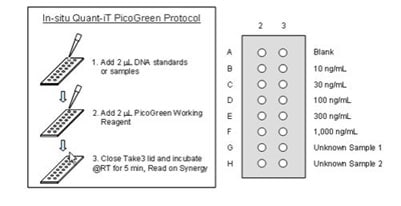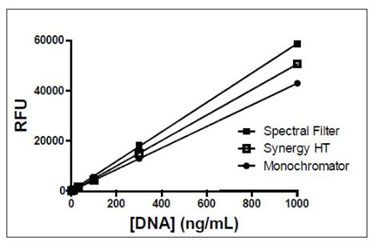Micro-Volume Analysis
August 2019
The purification and accurate quantification of nucleic acids and proteins from cells and tissues remain central to diverse downstream applications in the life sciences. For nucleic acids, these applications include qPCR and sequencing; for proteins, protein expression profiling using LC-MS/MS and 2-D gel electrophoresis are commonly performed. Quantification can be performed using intrinsic chromophores in the purine and pyrimidine bases of nucleic acids (absorbance λmax at 260 nm); or aromatics amino acid residues in proteins (absorbance λmax at 280 nm). Alternatively for greater sensitivity, fluorometric and colorimetric probes can be used, such as PicoGreen® for high sensitivity DNA quantification; or bicinchoninic acid (BCA) for proteins.
Traditionally, these measurements were made using standard 1 cm path length cuvettes requiring dilution of samples, but micro-volume quantification using extremely short measurement path lengths has been adopted to avoid sample dilution and thus provide a much simpler workflow. This issue of TekTalk describes the use of the Take3 Micro-Volume Plate in conjunction with our BioTek microplate readers to allow for all these types of micro-volume analysis and of course, other microplate-based applications using a wide range of detection technologies (i.e. absorbance, fluorescence and luminescence).
Featured Applications
Micro-volume Nucleic Acid Analysis using Common Assay Methods
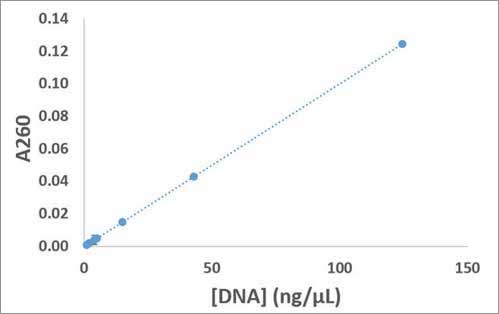
The Synergy LX Multi-Mode Reader provides the most common detection technologies used in biological research including absorbance, fluorescence and luminescence detection. Here we demonstrate its utility to quantify nucleic acids in a micro-volume assay format using UV detection and a fluorescence methods. The use of fluorescence methods insure specificity when contaminating species may be present while the micro-volume assay format minimizes sample volume requirements and provide higher sensitivity.
Micro-volume Protein Quantification using Common Assay Methods
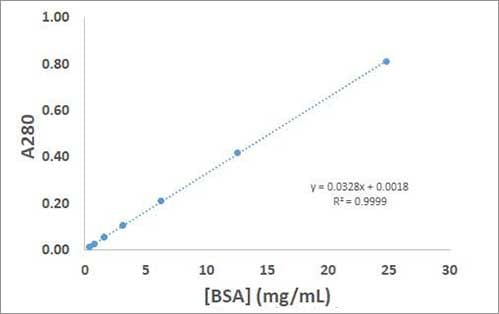
The use of the Take3 Trio Micro-Volume Plate in combination with the Synergy LX Multi-Mode Reader provides a flexible system to perform a variety of assays including micro-volume protein quantification. Micro-volume assays including the use of compatible colorimetric reagents extend the dynamic range of measurable protein concentrations into the low nanogram per microliter range typical of many mid-stream yields in various experimental workflows. Furthermore, the ability to accurately quantify analyte using as little as two microliters allows for conservation of limited samples or product.
Product Spotlight
Take3 Micro-Volume Plate
The Take3 Micro-Volume Plates, used with BioTek microplate readers, deliver fast, accurate quantification and purity measurements for multiple DNA, RNA and protein samples - using only 2 µL! Use Take3 in your BioTek multi- or single-mode microplate reader to measure up to 16 samples at a time with Take3, and up to 48 samples with Take3 Trio for a significantly faster data collection than single sample instruments. The unique design of the Take3 allows easy cleanup and maintenance…simply pipette your samples, close the plate and read. After reading, wipe the sample surfaces with a laboratory wipe. Gen5 software has pre-programmed protocols for fast, simple dsDNA, ssDNA, RNA and BSA, IgG and lysozyme quantification. Custom sample types can also be configured in the software. Take3 Micro-Volume Plates are convenient, easy to use and maintain, and work with your existing BioTek reader – no other instrumentation is required!
Tek Tips
Best Practices for Micro-Volume Analysis using the Take3
Nucleic acid and protein quantification is a vital step for downstream process such as sequencing, PCR/ qPCR and restriction digest and ligation activities. The BioTek Take3 and Take3 Trio micro-volume plates are designed to increase productivity by allowing users to decrease the required sample size to 2 µL. Using a compatible BioTek microplate reader, you can quantify direct absorption at 260 or 280 nm to allow for rapid quantification of nucleic acid or protein samples without the need for dilutions or secondary dyes. This method is accurate to a detection limit of approximately 2 ng/µL of dsDNA or 6 µg/mL of BSA. The Take3 micro-volume plate can also be used in a standard microplate mode to run both absorbance or fluorescence assays in micro-volume formats.
Prepping the Take3 plate
The Take3 system is a precision measurement device. For optimal performance we recommend that plate and the slides are clean and free of debris. A good method to check for the cleanliness of the slide is to perform a microspot read at 260 nm and 320 nm. The delta OD should be less than 0.020 with a typical clean slide measuring around 0.012. If you have wells that exceed the limit, clean the slides with a DI water moistened lint free laboratory wipe. Follow up the water wipe with a 70% alcohol wipe on both the top and bottom slide. If your samples are protein rich you can pipette a mild solution of detergent to cover the spot. The slide should then be rinsed with several wipes of DI water moistened wipes, then follow up with an alcohol wipe.
Quantifying nucleic acid and protein using the Take3 module
Protocols for quantification of nucleic acid protein are pre-programmed into the Gen5 Take3 module. Processing your samples are as simple as identifying the sample type, then loading your blanks and sample onto the microspots. Data is automatically calculated and exported into an excel spreadsheet. Gen5 Take3 protocol utilizes 3 wavelengths – 260 nm is the max absorption for nucleic acid, 280 nm which is the max absorbance for protein in solution, and a reference wavelength at 320 nm. The standard output will utilize the extinction coefficient of the appropriate sample type to calculate sample quantity. The standard sample types included in the module for nucleic acids are ssDNA, dsDNA and RNA. While the standard sample types for protein are BSA, IGG and Lysosomes. When using the Protein A280 protocol, you can also customize the sample types to add the extinction coefficient for your protein type. The purity of the sample will also be expressed by the A260/A280 ratio. A “pure” DNA sample will have a ratio of ~1.8, but contamination by residual phenol, guanidine or other reagents form the extraction will result in a lower ratio. The Gen5 module gives you the option to perform a spectral scan on each sample to qualitatively judge the sample purity. The spectral scan displays the absorbance properties graphically, allowing for a quick and simple visual assessment of the sample quality. If the spectral scan is required – make sure to check off the spectral scan box prior to starting a sample read.
Measuring micro-volume samples
The Gen5 Take3 module was designed to provide a complete solution for the most commonly used micro-volume applications. The Take3 plate can also be read in a standard microplate format to take advantage of the 2µL sample volume. Samples can be read via absorbance or fluorescence for applications such as micro-volume BCA, micro-volume Picogreen DNA quantification, and protein characterization via spectral scans. To setup a Gen5 protocol using the Take3 plate, open the procedure step in Gen5. In the plate type drop down menu – select your Take3 as the plate type. For best results you should select your serialized Take3 plate from the menu.
Once you have a plate type defined, select your read steps as required for your assay. As you define your read steps, you should limit the read area to the wells which correspond to the microwell spots on your Take3. For the Take3 plate, the wells are A2-H3. While on the Take3 Trio, the well are A2-H3, A5-H6 and A8-H9. With a minimum of 16 spots available, you have the ability to generate standard curves and unknown samples on the same plate.
In-situ Micro-Volume Analysis of DNA using PicoGreen
The utility of the Take3 plate can be extended to include micro-volume colorimetric and fluorescent assays. One example is the use of Quant-iT PicoGreen® reagent to extend the linear dynamic range of dsDNA quantification to low ng/mL concentrations. The in-situ method utilizes the Take3 microspots as both the reaction and measurement vessel, simplifying the workflow and conserving the reagent and sample. A standard Gen5 fluorescent read protocol can be used by selecting the Take3 plate type from the plate library once it has been added with path length calibration data. The wells are then selected for reading based on the standard 96-well plate layout with columns 2 and 3 representing the Take3 microspot position.
The protocol developed for use with the Take3 requires a freshly prepared PicoGreen working solution of ~133X dilution of stock reagent in TE buffer. Standards and samples are then loaded onto the Take3 microspots in a volume of 2 µL. PicoGreen working reagent is added to each microspot, preferably with a multichannel repeater pipettor for rapid addition. After closing the Take3 lid the reaction is incubated for 5 minutes at room-temperature, in the dark, prior to reading the fluorescence. Following the analysis, both the top and bottom slides should be wiped several times with a standard laboratory wipe saturated with methanol to remove any residual reagent.
A standard curve, in this example a 6-point including a blank, can be used with the PicoGreen assay in a micro-volume format with a working range of 10-1000 ng/mL DNA. As seen in the figure below, fitting the data using least means squared linear regression analysis with coefficient of determination (R2) values of > 0.999 for n=3 experiments shows excellent preformance across multiple instrument types and optical systems.
The standard curves can then be used for automated determination of sample concentrations by extrapolation using the Gen5 data reduction tools. Increased sample throughput can be achieved by performing the assay on a Take3 Trio capable of adding up to 48 standards and/or samples. By performing the assay and measurements in the same vessel, quantification errors caused by differences in incubation temperature, time and sample manipulation are minimized. Using the fluorescent binding dye effectively increases the dynamic range for DNA quantification by approximately three orders of magnitude when compared to determinants generated by native absorbance measurements at 260 nm.
Micro-Volume Analysis Resources
Application Notes
- Analytical Performance of Nucleic Acid Micro-Volume Quantification Using the Epoch Spectrophotometer System
- Analytical Performance of a Higher Throughput Micro-Volume Microplate Accessory for Microplate Spectrophotometer Platforms
- Analytical Performance of Epoch Multi-Volume Spectrophotometer System for Protein Quantification
- Micro-Volume Purity Assessment of Nucleic Acids using A260/A280 Ratio and Spectral Scanning
- Micro-Volume Determination of Labeling Efficiency Using Spectral Scanning Analysis in a Standard Microplate Reader
Webinars
Analysis of Nucleic Acids and Proteins Using Microplate Readers
Peter J. Brescia Jr., MSc, MBA, Applications Scientist
Quantification of purified nucleic acids and protein is a preliminary step for a multitude of downstream applications in a wide range of scientific fields of study. Depending on the sample and application, there is a need for a range of methods to best quantify the biomolecule of interest. Here we will discuss the various methods available to accurately and precisely determine a wide range analyte concentrations typically found during purification. Methods will include the use of micro-volume, microplate and standard one centimeter path length vessels using a range of detection methods available in microplate readers.
DNA Quantification - Multi-Volume/Multi-Mode Analytical Methods
Presenter: Peter J. Brescia Jr., MSc, MBA, Applications Scientist
Nucleic acids are the building blocks of life in all living things, from plants and animals to bacteria and viruses. In research, it's important to quantify nucleic acids prior to downstream processes like sequencing, restriction enzyme digestions and ligations, PCR and qPCR along with many other applications. Along with determining nucleic acid concentrations, it's also important to calculate the ratio of nucleic acid to protein to ascertain the purity of the nucleic acid before using the sample in subsequent analyses.
For Research Use Only. Not for use in diagnostic procedures.
